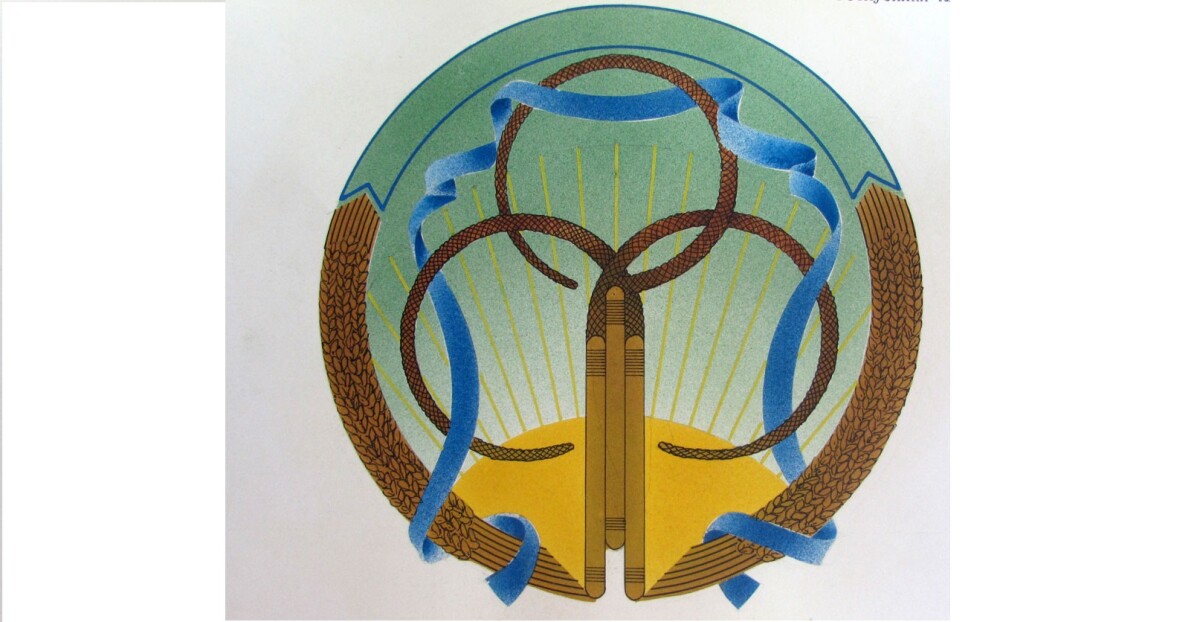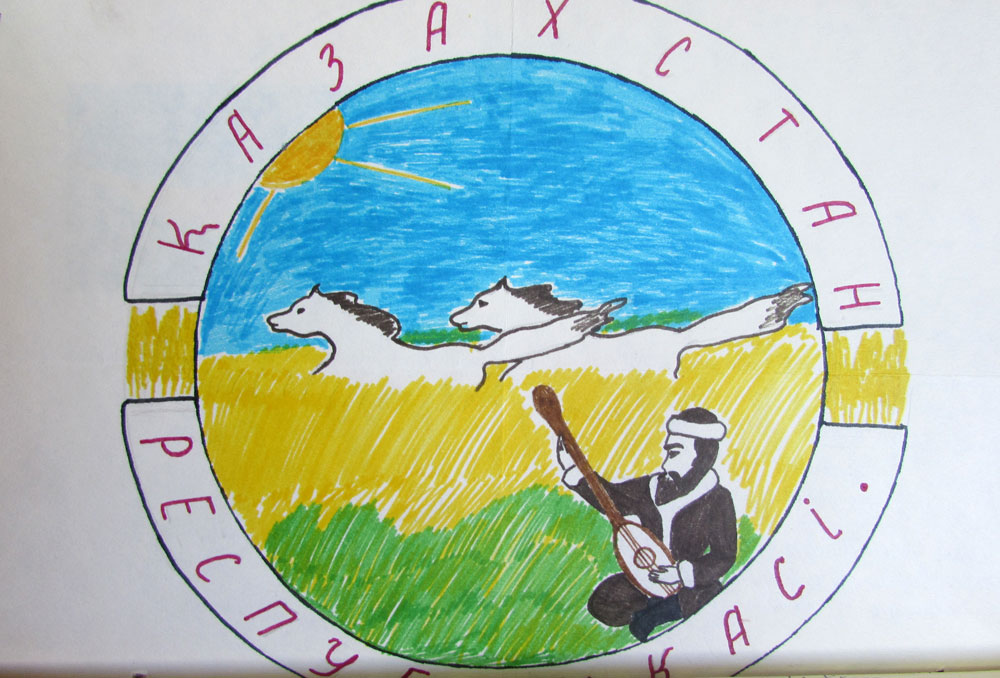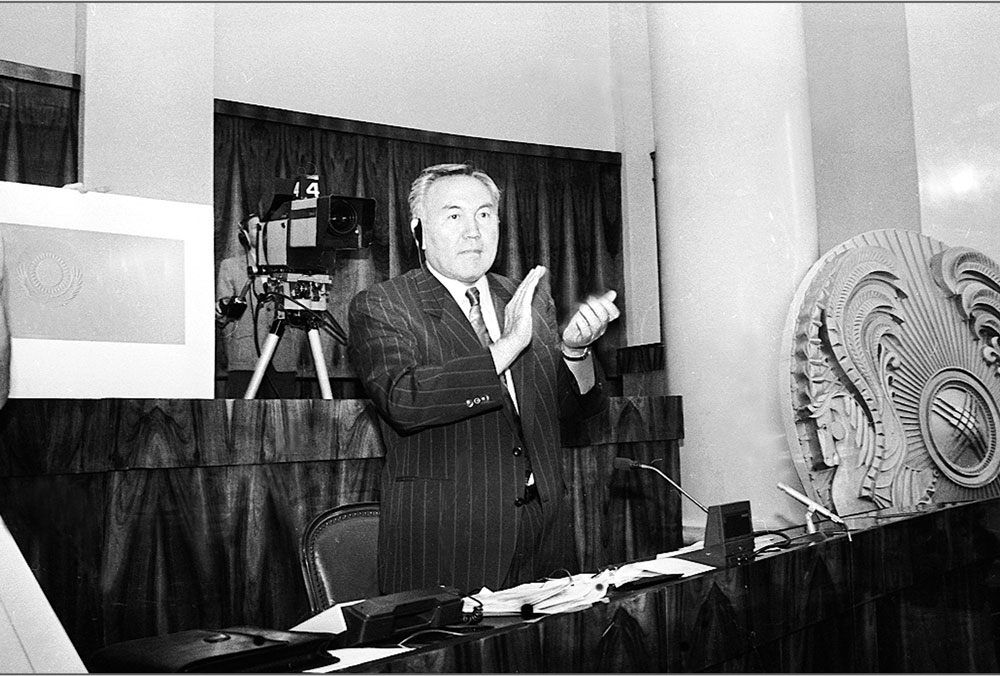
June 4, 1992 at the morning session of the country's parliament, the deputies began to discuss the draft flag, coat of arms and anthem simultaneously.
The President of the Republic of Kazakhstan N.A. Nazarbayev was attended. The meeting was chaired by the Chairman of the Supreme Council of the Republic S.A. Abdildin.
Vice Speaker of the Parliament Z.L. Fedotova, after a short debate, gave the floor to the head of the working group for the preparation of new state symbols of the Republic Abdildin S.A. Addressing the President of the country and people's deputies, the head of the working group stressed that "in the society there is an understanding that Kazakhstan needs attributes of statehood of a new type and new content: a flag, a coat of arms, a hymn. Symbolism means a lot in the life of an independent state, society. It embodies the past, present, future of the country, reflects its features, ideas, principles."
It was also stressed that the state emblems exist for thousands of years, symbolizing the goals and aspirations of each particular country. And the current coat of arms, according to the speaker, based on the coat of arms of the 1937 model, is based on the state emblem of the former USSR Union and does not meet the requirements of the time.

245 works and 67 letters with proposals for the best design of the state emblem were submitted for the competitive selection. Among the presented works the preference was given to the project, which authors were Malibekov Zhandarbek Malibekovich and Valikhanov Shota Idrisovich.
Describing the merits of the new project, he stressed that "at the heart of its artistic decision lie already mentioned shanyrak, eight-pointed star, as well as the winged horses, and the inscription: "Kazakhstan". The image of the epic horse, the traditional winged tulpar, symbolizes the height of the flight, the dream of the future. Shanyrak, a common Kazakhstan house is guarded by highly raised wings of horses.
The drafts of new state symbols of the Republic put forward for consideration by the deputies were approved by the Presidium of the Supreme Council.
During the debate, one of the first speakers was a deputy N.B. Sandybayev. He noted that "the Supreme Council is somewhat late with the adoption of the previous symbols" and the current symbols are somewhat similar to the previous symbols."
Deputy B. Kydyrbekuly spoke critically, stressing that he does not like that "the mane of a horse is like the ears of a sheep."
Emotional was the speech of Deputy A.F. Kozlov, who stressed that he "just admired the design of the new coat of arms. The authors very successfully fulfilled it."

Deputy U.A. Dzholdasbekov, having addressed to the president of the country and also addressing in Presidium, has made a number of serious remarks. He stressed: "Shanyrak is not visible here; the star is like the five and eight-pointed. I graduated from the Kazakh school, I know the history well. I just can not perceive this animal - it's a horse or it's a bullock. And what has that to do with the horns for a horse? But here you can, of course, come up with the idea that the horns are a symbol of strength, while in other nations, on the contrary, there is a lack of strength." Further, he caustically remarked that "a strong man's horns will never grow."
Deputy Smailov K.S. unconditionally supported the project of coat of arms, only adding that "the tulpars should remain with their wings, without horns."
Totally, with valuable comments on the project spoke out Deputy T. Suleimenov. As a designer, he made a thorough analysis of the project. He noted that "the yurt was considered the model of the world since ancient times, an amazing invention of mankind that has not undergone any changes for thousands of years". He drew attention to the figure "7", stressing that "the suppression of the three generators - the six elements and the skeleton of this shanyrak - is the seventh element. The figure "7" is present as a component, as Constructive.
Then, Kalmatayev M.D. entered the debate, who proposed "to look at the symbols separately, otherwise such an excursion will interrupt thoughts."
Deputy Urkumbayev M.F. unexpectedly made a statement that the proposed draft coat of arms does not stand up to criticism and proposed the discussion of the draft coat of arms to be removed." He was supported by Deputy Sh. Murtaza.
Subsequently, the Deputy Vassilyev G.B. proposed to make an image of a piece of wheat on the emblem, embodying bread.
After the debate the floor was given to the developers Chokan Valikhanov and S. Rustambekov who gave a thorough explanation.

After the break, the floor was given to the chairman of the working committee, academician of the NAS RK, S. Zimanov. The academician noted that the commission worked rather tightly, from January to May, they met almost weekly. As the chairman S. Zimanov noted: "I forgot where I work, I hardly visit the institute where I get wages", and so it was four months.
In order to develop the concept, the commission often invited experts from different professions: numismatists, archaeologists, historians, philosophers, and those who studied the theory of heraldry in Kazakhstan. As a result of these efforts, a certain concept was developed; about 50 variants of sketches, drafts of the flag were viewed.
After the discussions, the main criteria were chosen three standards of world practice, what should be flags and coats of arms. The first principle is a historical tradition. The flag and the coat of arms must reflect the historical tradition of this people, this state. The second motive is yesterday's statehood and today's statehood. The third motive - the criterion of statehood should develop as part of a large community, world civilization.
When selecting images, the members of the commission did not accept a demonstration of power and strength, when, for example, they portrayed a person with a strained bowstring, with something like a sword or a sword in their hands, or holding a scepter and an eagle. So it was supposed to be civilized, peaceful, and calm.
In order to demonstrate the historical continuity, the members of the commission settled on an octagonal star, not a pentagonal or hexagonal star.
The secret of the octahedral star is shanyrak. Shanyrak is not only the skeleton of the upper part of the yurt. The circle is movement, closed eternity, unity. Shanyrak personifies the Great Civilization, through which all nations passed, and which gave the world great people, and reflects the characteristics of nomadic civilization. On the arms of the state you can judge the country, the people, and the history of this people. Shanyrak just, according to the plan of developers, represents it.

Deputy Aksenov S.G. who took part in the controversy, proposed to take as a basis the previous coat of arms of Kazakhstan and finalize it. He was supported by Deputy Zhotabayev N.R. And a number of deputies (V. Chernyshev) considered it necessary to accept with completion the former coat of arms.
Deputy S. Takezhanov offered to support the submitted draft.
Under the circumstances, the chairman raised the issue of making a proposal to consider the draft coat of arms, and the issue of acceptance later. In the conduct of voting, in the proposed version, the design of the emblem was rejected.
Further about the draft emblem told the deputies A. Alimzhanov, V.V. Chernyshev, U. Baigeldiyev, as well as the cultural specialist B. Baizhigitov.
Then the main developer of the coat of arms Zh.M. Malibekov spoke out. He noted that "the design of the emblem reflects the history and customs of peoples, peace and friendship of the peoples living in Kazakhstan. Features of this coat of arms: in the middle of a shanyrak, a tulpar with beautiful horns, around shanyrak rays, as a symbol of the sun. Above on the coat of arms are depicted wings. ... It represents the symbol of unity. Shanyrak, even if it completely worn out is never thrown out. It is always in a holy place. In depicting it, we wanted to show the friendship of peoples, unity. No wonder they say: "Shanyrak biik bolsyn." This means an idealized concept that our Motherland prospers and enjoys authority. When they raise the shanyrak, a lot of people come together to put up a yurt, and everyone holds a uyk. The Uyks are the poles which support the shanyrak. The six-winged horse is also a symbol and comes from our ancient history. Over the course of a century, it is compared to a bird flying with spread wings. Therefore, the horse is depicted with wings. In the fifth and sixth centuries this symbol already existed, and at that time our country really flourished. In this regard, we wanted the traditions coming from there to continue today. You think: “Why did they choose tulpar?” Tulpar portrays our future. In this sense, we have depicted the tulpar. Whatever the sun, it should brightly burn."

As can be seen from the text, the main author of the coat of arms, Zh. Malibekov is very worried. His thoughts run up, the logical connection of the exposition is lost. Nevertheless, the statement of the author of the project with richly new information, perhaps, from all the speakers, he most fully explained to the deputy corps the ideas embedded in the draft of the new coat of arms. In the horns depicted in the project, the author explained, there is a lot of sense - protection and support. The horns symbolically supported our house, so they could protect. Images of this animal with horns are on the headdress of the Golden Man, he explained.
A. Kekilbayev who spoke later, supported the project of Zh. Malibekov. True, the deputy confused the author's surname and called him "Zhandarbekov". A. Kekilbayev stressed that "the project of this emblem is the most competent, because here there is the language of heraldry. The central and only figure is shanyrak, which is a compositional focus."
After the vote, the deputies went to the break. The debate on the adoption of the arms was continued at the evening meeting.
Chairman of the Supreme Council S. Abdildin, stressing that the necessary quorum is present, notes that during the break the deputies exchanged views and made amendments to the draft. For example "on the coat of arms in the middle, where there are uyks of shanyrak, it is necessary to make the rays a bluish shade. At the end, where there is an inscription "Kazakhstan", the image should be made in blue, and write “Kazakhstan” in gold letters." And most likely, the chairman jokingly added: "From the back, as we agreed the inscription "Chernyshev". Then he asked the deputies to return to the first version of the coat of arms. At the same time he gives an explanation to the mythological images of the winged horse. Here, the deputy Aryushenko L.A. notices that the horse is like a unicorn. Under the circumstances, the Chairman of the High Assembly gave the floor to the President of the country N.A. Nazarbayev.
President N.A. Nazarbayev expressed his views thus: "... I do not think that we have to strongly argue over the arms. Look at all the arms. I have now received flags and emblems. You know that Britain is always with a lion, the Russian crown and others - with two-headed eagles. Therefore, do not focus on what kind of horse it is: horned, unicorn, etc. The symbolism characterizes the people, their aspirations. We create for the first time in our history the first state emblem, the first heraldry. Most importantly, our heraldry does not repeat the other. I would consider it necessary to make such an amendment. Deputy Vassilyev correctly said that if the background of the flag is the sky, then the flag looks good. But make one five-pointed star in the middle and make the background blue. And accept it in this form".
The chairman puts on the vote a coat of arms in color. A coat of arms and a five-pointed star in color are designed on the screen. 214 deputies vote for this image.
The next speaker was Sartayev S.S. He says: "I like, for example, the President's proposal when he spoke about the color coat of arms. Another thing is that the prints will not turn out color, but on the state buildings, on all constructions there will be a color image. But with one condition only. I would not like to have something like a totalitarian system and something of the bad remnants of the past on our arms. The five-pointed star in Russia is going to change now. First, the five-pointed star will remind us of the social activities of the Masonic movement. ... Therefore, I would like to see there was an eight-pointed star that will meet the traditions of our people: "Dzhigit must be of one character, but with eight facets." And let's leave the eight-pointed star."
Deputy B.S. Aitimova suggested leaving the blue background, leaving the rest golden, and removing the star altogether.
The Chairman proposes to proceed to the vote, and the issue of the star should be resolved separately.
Deputy Obukhov V.V. proposed to remove a star, a sickle and a hammer, and put an image of the globe. Limit land and sea on the globe and mark the Republic of Kazakhstan with a small stroke, so that the whole world could see Kazakhstan on the arms.
The chairman again returns to the image of the star - seven-pointed, octagonal and pentagonal. After the vote, when 238 votes were cast, the image of the emblem is approved. At the end of the debate, the chairman sums up: "Dear colleagues! Regardless of the fact that some suggestions of colleagues on some elements of the coat of arms have not passed, you made a huge decision: we adopted and approved a coat of arms that does not resemble the existing arms in the world, and not only in neighboring states." He then asks the deputies to proceed to discuss the flag.
N.A. Nazarbayev described the essence and meaning of the past as follows: "Modern state and political symbols of the country mean for the Kazakh people and representatives of nationalities inhabiting the republic, not just the replacement of old, dilapidated attributes of class, totalitarian society. This is evidence of the final turn of the republic towards the construction of a democratic and rule-of-law state, the creation of a new society based on the principles of the sovereignty of the individual, the unity of its ethnically diverse people."
Translated by Raushan MAKHMETZHANOVA
